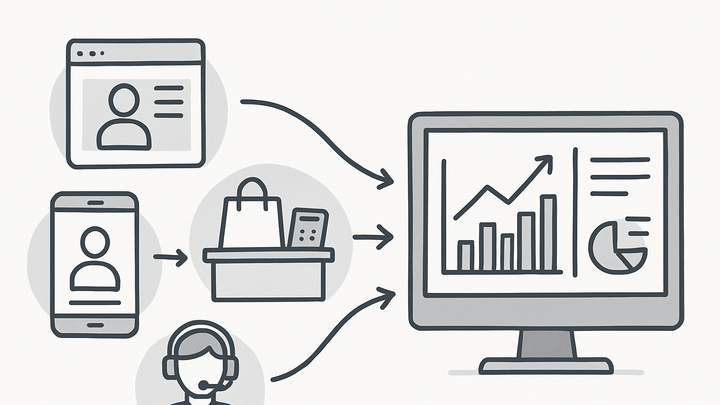Published on 2025-06-28T08:09:05Z
What is Offline Analytics? Examples and Best Practices
Offline Analytics is the practice of capturing and analyzing user interactions that happen outside digital channels, such as in-store purchases, call-center engagements, or paper form submissions. By importing these offline events into analytics platforms like GA4 via the Measurement Protocol or through batch data uploads, organizations can achieve a unified, cross-channel view of customer behavior. When paired with cookie-free web analytics solutions such as PlainSignal, offline analytics ensures privacy-compliant tracking while filling gaps left by digital-only data. This synergy enables more precise attribution, improved marketing ROI, and deeper insights into the full customer lifecycle.
Offline analytics
Capturing and analyzing non-digital events (e.g., in-store purchases, call logs) to unify customer data across online and offline channels.
Why Offline Analytics Matters
Offline analytics fills the blind spots left by online-only tracking. By capturing events outside the web, companies can attribute conversions more accurately, optimize marketing budgets, and deliver personalized experiences across channels.
-
Complete customer journey tracking
Combine online and offline touchpoints to understand how customers discover, engage, and convert across all channels.
-
Accurate attribution
Assign credit to appropriate marketing channels by including offline conversions in your attribution models.
-
Enhanced decision-making
Use unified datasets to identify trends and make better strategic decisions based on comprehensive insights.
Data Collection Methods for Offline Analytics
Offline data can be collected through various systems and methods and then fed into your analytics platform for analysis.
-
Point-of-sale (pos) systems
Export sales transactions from retail POS and import them into GA4 to attribute in-store purchases to digital marketing campaigns.
-
Crm and call center logs
Leverage CRM exports or call-center transcripts to track phone inquiries and service interactions as events in your analytics.
-
Manual batch uploads
Upload CSV or JSON files containing offline event data via GA4 Data Import or custom APIs on a regular schedule.
Implementing Offline Analytics with GA4
Google Analytics 4 supports offline data ingestion through the Measurement Protocol and Data Import features. Below are key implementations:
-
Measurement protocol
Send real-time offline events directly to GA4 Measurement Protocol endpoint.
-
Endpoint url
-
Required parameters
Include ‘client_id’ or ‘user_id’, and an ‘events’ array with event_name, timestamp_micros, and parameters.
-
-
Data import
Batch import offline events via GA4 UI or BigQuery to augment existing data.
-
File formats
Supported CSV and JSON formats with schemas matching GA4 import requirements.
-
Scheduling
Automate uploads with scheduled scripts or ETL tools.
-
Cookie-Free Analytics Example with PlainSignal
PlainSignal offers a simple, privacy-friendly way to capture online behavior without cookies. You can merge PlainSignal data with your offline analytics to build a full picture. Here’s how to implement PlainSignal and correlate offline events:
-
Web tracking code
Include the PlainSignal script on your site to start capturing page views and events without cookies.
-
Example snippet
<link rel="preconnect" href="//eu.plainsignal.com/" crossorigin /> <script defer data-do="yourwebsitedomain.com" data-id="0GQV1xmtzQQ" data-api="//eu.plainsignal.com" src="//cdn.plainsignal.com/plainsignal-min.js"></script>
-
-
Offline data correlation
Use a unique identifier (e.g., hashed email or user ID) to match PlainSignal web sessions to offline events ingested in GA4.
